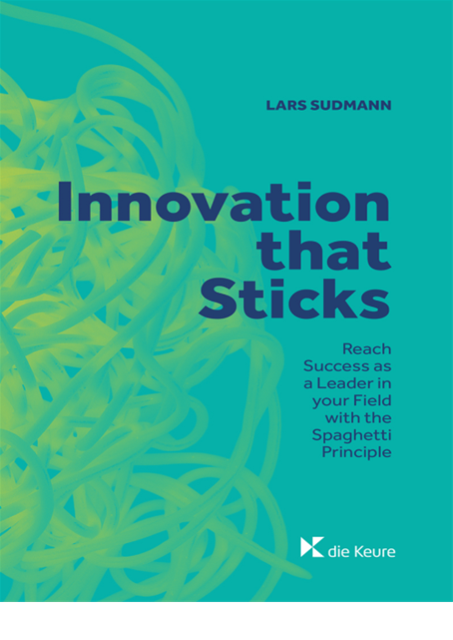Quickly, if you were given a choice, which of the following scenarios would you prefer?
a) You get €1,000,000 for sure.
Or
b) You need to play a game where you have a:
- 10 % chance of getting €2,500,000
- 89 % chance of getting €1,000,000
- 1 % chance of getting €0
There is no right or wrong answer here as all depends on one’s risk profile. From an expected value (EV) perspective option b) is more attractive with an EV of €1,140,000.
However, many people choose the “safe” version (option a). Why? One reason is the nagging 1% downside.1
Imagine this scenario now in an organizational context. We can see from this example the three levels that are at play when we make decisions: Questions start to immediately appear in our head on:
- the cognitive level (“Hm, what is the optimal solution?”);
- the emotional level (“What if I choose b) and I end up having nothing? Aaah”); and
- the social level (“Will I look like a fool if it goes wrong?”).
We need to make sure that we take all three levels into account when making a decision, alone or in teams. Let’s explore the levels one by one.
1) The Cognitive Level
Give a quick answer for yourself for the following, without using a calculator. The correct answer is at the end of the document.2
8 x 7 x 6 x 5 x 4 x 3 x 2 x 1 = ???
1 x 2 x 3 x 4 x 5 x 6 x 7 x 8 = ???
People routinely not only underestimate the real outcome of these equations. The interesting additional effect is that people routinely give a smaller estimate for the second equation.
Mathematically they are the same but we usually anchor the first things we see. And the 1’s, 2’s and 3’s lead to a smaller result in our head than the 8’s, 7’s and 6’s in the beginning. Anchoring is one of the strongest biases of decision making that exists, especially in the corporate world.
What can you do to improve the cognitive level of decision-making?
- Frequently do “white sheet” analyses, i.e. deconstruct and build up cost, assumptions etc. from the bottom up, instead of relying on first guesses. Create various options/solutions rather than only one option or number to avoid anchoring and to ensure breadth of analysis.
- Take the view from another side and include different roles and perspectives when approaching decision-making. Ensure to have a diverse team: Breadth of perspectives can help us gain insights that we did not have before.
As G.B. Stern puts it:
“Both optimists and pessimists contribute to our society. The optimist invents the airplane and the pessimist, the parachute.”
2) The Emotional Level
Author Seth Godin says about decisions:
“Irrational decisions are almost always caused by fear. If you want to change the behavior, address the fear.”
We can see this for example at play with the question that I discussed previously: “What kills more people: coconuts falling from trees or sharks?”
It is estimated that there are ten times more people killed by coconuts than by sharks. However, when we hear the word “sharks” very often horror pictures of “Jaws”, media news etc. come to mind…the emotional affection and recognition is high and is one of the factors that led humans overestimate the likelihood of events.
The power of emotions can of course be very positive in business interaction in the form of passion, however, we have to be also aware of the negative effects and how they take over from rational thinking that we often think is in control but in reality not always is. The ostrich syndrome is just one of the side effects.
What can you do to improve this level of decision-making?
- One of the simplest yet most powerful techniques: Breathe ten times deep inside before making a decision when in an emotional state, and ideally combine this with counting at the same time. It is very difficult to get upset or fearful while doing this. Additionally, ask yourself this question: on a scale from one to ten, how important is that subject now?
- When you feel fully deep in a situation and emotionally engaged, it’s a good thing to institutionalize that you take a break first. As one of my seminar participants once put it about the best practice in his organization: “It’s ok to complain, but only the next morning.” Vent your feelings by, for instance, writing a note to yourself, taking a brisk walk, or other activities. Force yourself to have at least 10 minutes distance from an emotionally charged situation before making an important decision about it.
3) The Social & Group Level
The cognitive and emotional factors are even more at play when we bring in our fellow humans. If we are forced to look at a decision, presenting results etc. and we are under pressure of a full group watching us like in this picture, then very often decision-making can go out of hand if we do not manage it well.
In the famous Asch conformity experiments participants were asked to say which of the lines to the right is similar to the one on the left.

What can you do to improve this level of decision-making?
- Have roles defined: As a leader, define the roles that individuals should have in decision-making. For instance, you could define that one person’s role is to find everything that speaks against a project. Then, the individual has a clear mandate to bring up issues and you are not depending on the expectation that folks will just speak up, with potentially negative reactions from others (“Uh, here is Fred again with his nay-saying attitude”).
- Define checklists and decision frameworks: Stress is high when we are under pressure and the effect on us is often underestimated. The key factor here is again awareness and making sure the battle is won before it begins. By laying out a decision framework beforehand one can avoid the “headless chicken syndrome” of everybody running around when a difficult situation has to be managed. Discuss with your team from time to time on how you will decide in certain tough situations. IFTTT, or “If This Then That” rules are pretty powerful here (“If situation X happens we will first look at Y…” and so on). In times of stress you can fall back on this. In this powerful documentary you can watch pilots immediately going into “checklist mode” during a real life stressful situation.
Avoiding the pitfalls and optimizing decision-making
The key to good decision making is to acknowledge that cognitive, emotional and social factors are at constantly play. Installing the strategies outlined above has helped me greatly, especially in a corporate context.
Additionally, one should constantly work on building one ‘s own decision-making muscle. Take Peter Drucker’s advice and do a regular review of your major personal decisions. Add a calendar entry 6-12 months in the future with all of the key assumptions and let your future self review them.
Which strategies have worked for you?
Lars Sudmann’s focus is organizational leadership and change management. The former CFO of Procter & Gamble Belgium has advised and trained more than 10.000 business leaders. His clients range from Fortune50 companies to start-ups and they seek his advice on leadership challenges such as decision-making, change management, high-performance culture and executive communication. For more information or to book him as a speaker, consultant or coach visit www.lars-sudmann.com.
Footnotes
1 Such a scenario is of course a reduction of reality. However, it still reveals interesting insights about choice preferences.
2 The correct answer is 40.320
Literature
Kahneman, Daniel: e.g. Thinking Fast & Slow
Plous, Scott: The Psychology of Decision Making
Sudmann, Lars / Lenzen, Wolfram: Die Psychologie der Krise, Controller Magazin
And here more top books that I recommend on the psychology of decision-making.
Image credits: Istockphoto.com; Shutterstock.com




